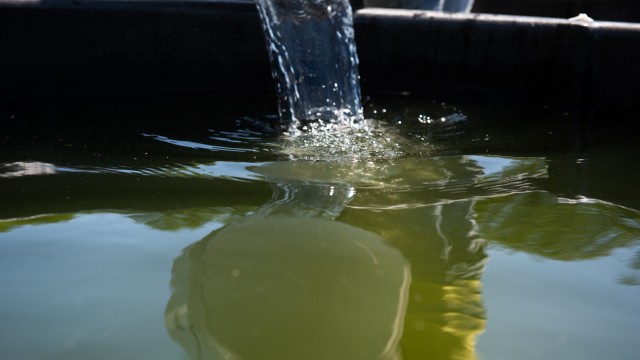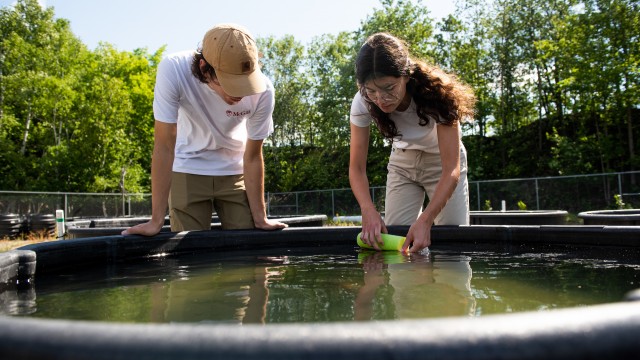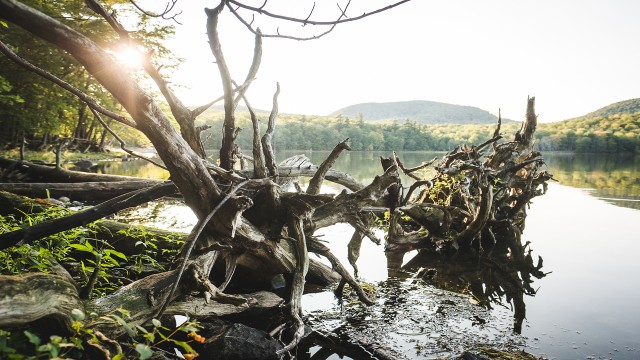If you look into a pond, you can see a multitude of species of plants and animals, all coexisting in a diverse community. The more astute observers will likely notice that some species are more abundant than others. Have you ever wondered what determines the population of each species in a pond?
Many factors can contribute to changes in the makeup of animal and plant communities over time. These factors can generally be grouped into two categories: species sorting and ecological drift. Two McGill University researchers from the Biology department, Mark Davidson Jewell and Prof. Graham Bell, investigated these processes using the experimental ponds at the Gault Nature Reserve’s Large Experimental Array of Ponds (LEAP), examining the relative contribution of species sorting and ecological drift to the composition of different duckweed species over several generations.
What is species sorting?
Species sorting is similar to natural selection, except that it operates at the community level instead of focusing on an individual species. It’s a phenomenon by which species with traits that boost their chances of reproduction (such as adaptations that help them survive for longer in a specific environment) are more likely to flourish in an environment than less-adapted species. Over time, this leads to the “sorting” of species, where the better-adapted species become the most abundant.
What about ecological drift?
Ecological drift refers to the stochastic events that affect the numbers of individuals of a particular species. To put it simply, a stochastic phenomenon is an event subject to probability. For example, natural disasters like wildfires, new diseases or accidental premature death are all stochastic events. The abundance of different species within a community is partly the result of a gradual series of more or less “random” events, hence the term “drift.”
The experiment
For their experiment, Jewell and Bell looked at duckweed, a small plant that grows on the surface of various aquatic environments. Their small size and rapid reproduction rate make them excellent models for this type of study; in just a few weeks, the researchers could observe multiple generations.
The researchers began by choosing four species of pond-dwelling duckweed, known under the scientific names of Lemna minor, Lemna trisulca, Spirodela polyrhiza and Wolffia columbiana. Next, they manipulated the initial abundance of each species, creating four different types of aquatic communities in the LEAP ponds. Over the course of 12 weeks, the communities were closely monitored to measure the abundance of each species in relation to the others. Jewell and Bell then used statistical methods to determine how species sorting and ecological drift affected the populations.
So, what did they find?
The results showed that, while the relative impact of both species sorting and ecological drift changed over time and varied across species within all four communities, species sorting eventually dominated. As the experiment progressed, the researchers noticed that the communities became increasingly similar over time despite initial differences in duckweed composition. These findings are in line with the effects of species sorting, which seems to lead communities toward a state of equilibrium.
Why is this important?
Despite major developments in ecological research in the past few decades, there is still ongoing discussion among scientists about the extent to which ecological drift affects the composition of communities. As human activities continue to cause biodiversity loss across the globe, it is all the more crucial for us to better understand the mechanisms that help create and support that biodiversity. Indeed, new discoveries in the field could play a vital role in conserving and restoring natural environments, ultimately contributing to the well-being of all of us who share this planet.
Philippe Hamel
Field Operations Assistant
Gault Nature Reserve of McGill University
About the article
Jewell, M. D., & Bell, G. (2022). A basic community dynamics experiment: Disentangling deterministic and stochastic processes in structuring ecological communities. Ecology and Evolution, 12(12), https://doi.org/10.1002/ece3.9568
Header: Duckweed on a pond at the Alice Johannsen Welcome Centre (Photo: Savannah Bissegger O’Connor)
Related articles
Invasive Species: A Study of Tench and Their Invasion Potential
August 4, 2022. To understand the potential impact that Tench might have on the Great Lakes Basin, McGill Ph.D. student Sunci Avlijaš conducted a study in 2018 examining the effects that temperature and type of lake environment have on Tench growth.




